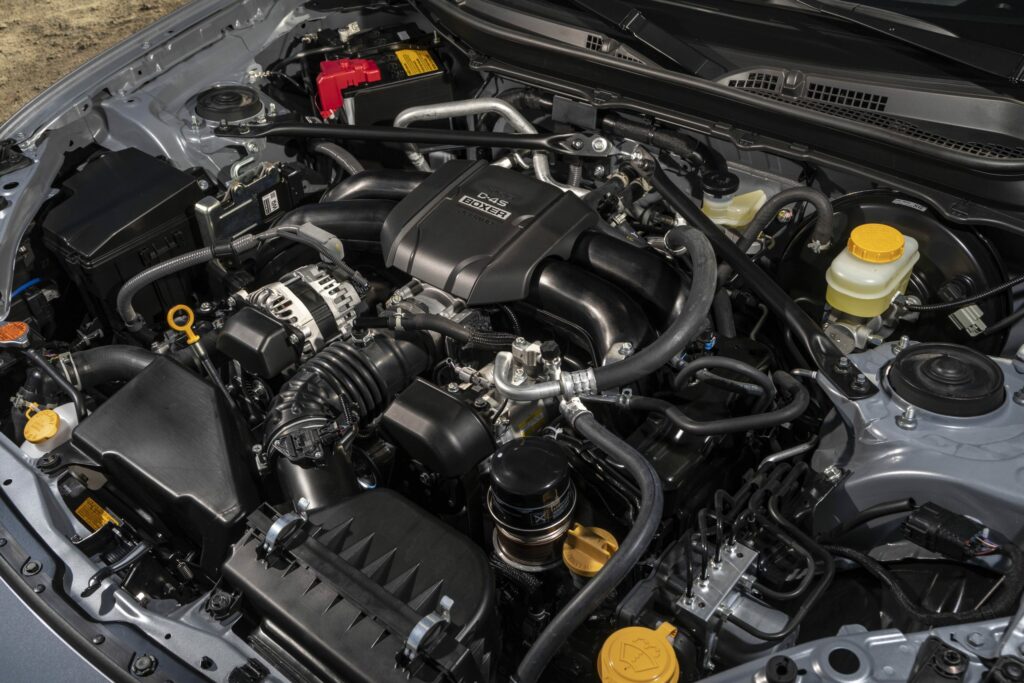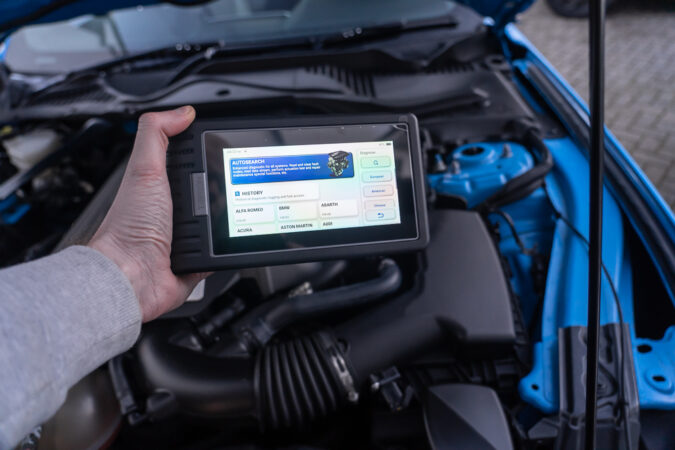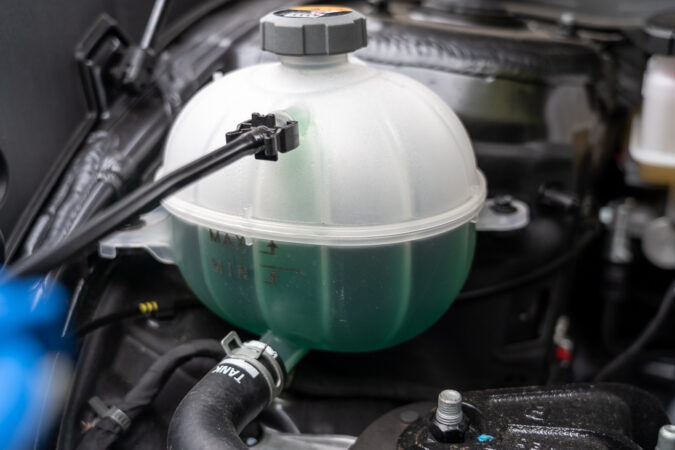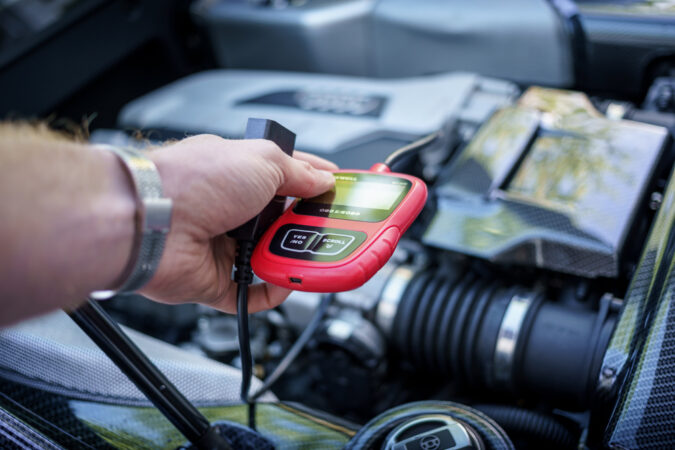Your On-Board Diagnostic System (OBD) detecting mechanical issues within your car results in the display of OBD codes or Diagnostic Trouble Codes (DTC). You might have a problem with your engine thermostat if trouble code P0128 causes your check engine light to come on.
OBD codes starting with P further come in two different varieties: P0 and P1. P0 codes are related to the powertrain/emissions system of the vehicle. Hence the check engine light turning on is a common symptom of a P0128 code. On the other hand, P1 codes do not result in the check engine light turning on since they are not related to emissions.
This code indicates that the powertrain control module (PCM) of the engine has determined that the engine has not attained the necessary temperature level within a predetermined period of time following engine start-up. The P0128 trouble code frequently denotes a broken thermostat. Despite being general, the precise repair procedures can change based on the brand and model. Read along to find out more.
- OBD Codes
- P0128 Definition
- Causes Of Failure
- Repairs And Fixes
- Thermostat Replacement
- Final Conclusion
- FAQs
OBD Codes
An On-Board Diagnostics (OBD) system, as it is officially named, is installed in your car. OBD-II is a universal system for these diagnostic codes that required all vehicles to have a common connector to access vehicle information. It was put into place by the whole auto industry in 1996.
In essence, onboard diagnostics refers to the car’s main computer system. It consists of a network of sensors throughout and a connecting point that allows access to vehicle data. When used together, the OBD system allows you a look inside your car’s workings and warns you if any problems develop with the engine, transmission, vehicle electronics, or any other system.
If a sensor feeds it information that is outside of the typical range, the Electronic Control Unit (ECU) of your car saves information in what is known as a Diagnostic Trouble Code (DTC). The DTC is a group of numbers and letters that pinpoints the issue’s origin and type.
On the other hand, the term “OBD-II codes” refers to the complete DTC system (body codes, chassis codes, powertrain codes, and network codes). OBD-II codes let you know whether any of your car’s components are malfunctioning.
The OBD-II port located beneath the steering column of your car is the most popular method of accessing them. They can be manufacturer-specific but are typically standard in the case. This is why advanced OBD-II scanners are frequently required to access your vehicle’s OBD-II codes correctly.
OBD-II codes come in four separate categories: P, B, C, and U. P stands for powertrain (engine and transmission) systems. B and C stand for body and chassis, while U represents network and wiring systems, respectively. There will always be at least one P0 code stored when the ECU commands the check engine light to come on.
P0128
The OBD-II extension code P0128 indicates a coolant thermostat issue in your car. P0 codes are shown as P0XXX, with the third digit in the code representing the location where a problem has been encountered by the system. The presence of the number 1 following P0 denotes a fuel and air metering issue, which could point to a thermostat malfunction.
Error code P0128 implies that your engine coolant temperature is below the thermostat’s regulating temperature. That indicates that your powertrain control module (PCM) or engine control module (ECU) has detected that your engine is operating cooler than normal.
The temperature doesn’t rise quickly enough when the engine runs cooler than it should. The vehicle must enter “closed-loop” mode as soon as the engine reaches operating temperature. When everything has warmed up in this mode, the ECU starts controlling fuel by using the oxygen sensor or sensors. Hence, a P0128 code could result in problems with fuel efficiency and emissions regulation.
The ECU/PCM has the opening temperature of the engine’s cooling system thermostat programmed into it. It’s crucial to keep in mind that some OEMs will record a P0125 code if the issue initially caused the P0128 to become so serious that the engine starts to run even cooler.
P0128 Coolant Thermostat
A healthy engine should be operating above 200 degrees. Some cars’ radiator cooling fans don’t even turn on until the coolant temperature has reached close to 230 degrees. So it makes sense that the ECU/PCM algorithm would store the code and flash the check engine light if it only sees 170°F while the engine is expecting 200–230°F (most thermostats open at just below 200°F).
If the engine temperature is lower than anticipated, the ECU typically records that information and retains it on file. The ECU not only logs the occurrence but also keeps a P0128 code and turns on the check engine light if it occurs again. P0128 is frequently referred to as a “two-trip” defect because of this.
After the code is set, the ECU/PCM clears the code and extinguishes the check engine light if the engine does reach its operational temperature on two consecutive trips.
The cool engine condition that causes a P0128 to appear may or may not sustain damage. For instance, an engine that runs too cold for an extended period of time might start to produce crankcase sludge in addition to the obvious effects it can have on emissions and fuel efficiency. This could happen even if the oil is changed often.
When Error Code P0128 appears in the PCM, the engine is either performing one of two actions: either the engine requires more than 15 minutes to warm up to the required operating temperature as determined by the coolant temperature sensor. Or else, the operating temperature is consistently below the 160° to 170°F range while the vehicle is in operation.
As a result, the system will switch back to warm-up mode, which uses a richer mixture. This leads to increased fuel consumption and greater levels of CO2 and HC being released.
P0128 Causes
A thermostat that is leaking or jammed open is the most likely culprit for a P0128 code. This should be one of the first places to be examined. Also, related concerns would normally indicate another error code. To locate your thermostat precisely, go through your service handbook.
However, check these other places as well before replacing your complete thermostat. Low engine coolant could change the engine’s operating temperature to the point where it triggers the P0128 error code. After checking your thermostat and coolant level, you should check your intake air temperature sensor (you can learn more in our guide on the P0113 Dodge code), coolant temperature sensor, and coolant fan as these may also trigger an error code.
Code P0128 can be set off by anything that causes fluctuating coolant temperatures or breaks the coolant thermostat’s signal to the PCM. The most frequent causes are:
- Thermostat Stuck Open – The most frequent reason for code P0128 is an engine coolant thermostat that is leaking or jammed open.
- Faulty Engine Coolant Temperature Sensor – A P0128 code may also indicate faulty wiring or a defective sensor.
- Malfunctioning radiator fan – The radiator fan in your car keeps the coolant and engine cool. The coolant will heat slowly if it remains in the on position.
- Dirty or low coolant – The thermostat will most likely stick due to a lack of coolant, although occasionally unclean coolant may also be to blame.
- PCM Failure – Finally, the PCM itself may be faulty and incorrectly emit error signals.
P0128 Symptoms
Your thermostat is a crucial part of controlling the temperature of your coolant and testing for more serious engine problems. A broken thermostat won’t usually affect performance, though.
What does the code P0128 indicate then? Your malfunctioning indicator lamp will probably start to light up. As you drive at a high speed, you might also notice that it takes your engine longer to warm up or that the temperature drops.
In order to maintain your cooling system functioning correctly and to spot any early indications of engine damage, replacing your thermostat is crucial.
P0128 Fix
Error code P0128 can appear for a number of reasons, so trying to diagnose it on your own could be detrimental rather than helpful. As a result, it is essential to get in touch with a nearby mechanic for a thorough diagnosis. Most mechanics will check the coolant temperature when it begins to flow through the radiator pipe to see how hot it is.
In most cases, heating the hose is necessary to get the thermostat to open. When this happens, hot coolant ought immediately to start to flow, instantly heating the radiator hose. The thermostat can be jammed open if the radiator hose warms slowly and does not heat up as quickly as it should.
However, the mechanic will look for problems with the coolant temperature sensor if the hose heats up too quickly.
A mechanic will either use a scan tool or just check the temperature gauge on the car to inspect the coolant temperature sensor. For measuring coolant temperature, the majority of automobiles feature two distinct sensors.
The ECM receives information about coolant temperature from one of these sensors. The second sensor is used as a gauge or warning light on the dashboard to warn the driver of an overheating problem. A blue coolant light is actually displayed on the dashboard by manufacturers like Volkswagen to let the driver know the coolant is not at the proper temperature.
If the coolant system is working properly, a car’s thermometer should read around 200 degrees Fahrenheit. Your coolant temperature sensor most likely has a problem if the reading from the scan tool differs from the reading from the thermometer.
When this occurs, your sensor’s connectors are frequently harmed or degraded, which results in a weak connection. If the connectors are working properly, the sensor is probably the problem.
P0128 Diagnosis
Above mentioned techniques are quite sophisticated. Hence, it frequently requires the knowledge of skilled and experienced mechanics in order to deliver an accurate diagnosis. To achieve the best results, it is advised that you have your car inspected by a qualified mechanic who can identify the primary cause of the error code and carry out the required repairs.
Any error code that your car’s OBD system generates needs to be taken carefully, especially if it relates to the powertrain, like P0128. Vehicle coolant cools down your car in relation to a P0128 error code, much like sweat is the body’s natural method of cooling itself.
Consequently, your car’s thermostat ought to open when it reaches a particular temperature, allowing coolant to circulate through the engine. Rather than automatically checking if a car is overheating, code P0128 tracks how quickly the coolant reaches a specific temperature. Whereas, whether the car is overheating or not is indicated by the P0217 code.
Low coolant levels are the simplest repair option to implement first. Turn off your engine before starting, then wait until it has cooled enough to access your coolant reservoir. A coolant system is pressured when it’s in use. If you’re not careful, opening a hot coolant system could result in burns and other damage.
Take note of the levels and strength of your coolant. Then compare it to the levels indicated in your service manual once your engine and cooling system are cool enough to inspect safely.
P0128 DIY Diagnosis: Other Factors To Consider
It can be challenging to inspect your thermostat, even if it is one of the most likely problems with this fault code. It’s possible that a broken thermostat shows no outward evidence of damage. It’s a good idea to check these additional systems before replacing your thermostat-
- Check the coolant’s strength and level.
- Check that the cooling fan is running as it should be and that it is operating correctly. Replace as necessary.
- ECT (Engine Coolant Temperature) sensor operation should be checked; if necessary, replace.
- IAT (Intake Air Temperature) sensor operation should be checked; if necessary, replace.
- The thermostat might need to be replaced if all these other factors and parts are in good shape.
Thermostat Replacement
The engine coolant thermostat is the most frequent cause of error code P0128. So the first step in diagnosing it is to see if it is stuck open or leaking.
Start the car after making sure it is absolutely cool, then put your hand on the radiator hose. Be careful since the pipe will become quite hot if everything is functioning properly. The thermostat has to be cleaned or changed if it warms slowly or not at all.
It may also be stuck or leaking. In that scenario, you should also examine the condition of the coolant system and the coolant levels. A thermostat may become stuck due to dirty coolant. The next step is to check your coolant levels and system if the hose is getting hot quickly.
Additionally, you should listen to determine whether the radiator fan is stuck or whether any hoses have collapsed.
You should check to see whether the coolant temperature sensor is broken. Also, check if the cooling system appears to be in good shape and if the fan is not stuck in one position. A manual reading taken with an infrared thermometer is to be compared to the reading your scan instrument is providing. The average temperature is about 200 °F.
If the readings aren’t accurate, check the wiring and connectors to the sensor and, if necessary, replace or clean them. Start the car after clearing the code. Replace the sensor if the error code reappears. However, keep in mind that this is a rare cause of code P0128. If you replace the sensor and the problem still exists, you might need to replace your PCM.
P0128 OBD Diagnostics
Step 1
The freeze frame information from the vehicle must be noted and saved. This is in order to determine which of the operational modes set off the error code. You must monitor the engine load, MPG, RPM, and TPS of the car, as well as the engine coolant temperature and intake air temperature.
These numbers will aid in identifying whether the car was being driven at freeway speeds or slower ones. The difference between the two will aid in code verification.
Step 2
Next off, connect your OBD II scanner tool to the car. Then select the engine sensor data stream that most closely resembles the factory settings. When the heater is switched off, start the engine and see how the coolant temperature values fluctuate.
Step 3
If the coolant temperature readings don’t rise above 160-170°F in the course of 15 minutes, put your foot on the brake and shift into drive. Then press the throttle for two to three minutes to see if the readings rise. Your thermostat is most likely to be at fault if the values for the coolant temperature fall within the proper range.
Step 4
Turn off the heater and raise the RPM to roughly 2000 while in “park” if the car still can’t achieve the 160° to 170° F range. The thermostat is to blame if the coolant temp readings are outside of the acceptable range.
Make sure that both the mechanical and electric cooling fans are not in the “on” position when diagnosing this error code. Because this will result in the engine running at a very low operating temperature. Additionally, confirm that the intake air temperature sensor’s readings are accurate and are not too hot or cold. These readings relate to both air temperature and under-the-hood air temperature.
Getting the air temperature by 100° F below the coolant temperature measurements after the warm-up is a decent rule of thumb in this situation. When the car is cold-started, the reading values should be almost identical.
P0128 Chevy
A stuck thermostat is a common source of the code P0128 in many GM cars and trucks. This is applicable to models including the Chevrolet Trailblazer, Silverado, and HHR. When the code P0128 is indicated in some GM vehicles, the temperature gauge stops functioning and the radiator fans begin to operate continuously. Unless there are other problems, replacing the thermostat usually fixes the issue.
Reprogramming the PCM is suggested as a fix for the code P0128 in some Chevys. These include the 2006 Chevrolet Malibu, Impala, Pontiac G6, and a few more cars according to the GM TSB dated 2007.
P0128 Chrysler Town And Country
A few Chrysler technical service advisories advise reprogramming the PCM (engine computer) if the code P0128 is discovered. Another Chrysler TSB details a problem where the thermostat may slip out of place. This allows coolant to pass through, hence setting the code P0128.
This problem affects the 2009–2010 Dodge Challenger, 2008–2010 Dodge Magnum/Charger, and Chrysler Town And Country. The problem can be fixed by adding a shim and changing the thermostat housing with a new component.
P0128 Nissan Altima
Check the Technical Service Bulletins (TSB) for Nissan vehicles. Because the error code may need to be fixed by reprogramming the ECM. The Nissan TSB, dated April 2009, for the 2007 Nissan Altima and Sentra recommends using a scan tool to check the engine computer’s part number and reprogram it. This is only if it matches the numbers given in the bulletin.
P0128: Conclusion
The error code P0128 is not particularly serious. However, there is a minor possibility that water contamination of the oil could result in deterioration and engine damage. This is if the problem is not fixed and the car is driven for a long time.
This code appears when the coolant doesn’t become hot enough and it indicates that the engine isn’t getting hot enough. Hence it isn’t able to burn off condensation, which could lead to water entering the engine’s oil.
Even while the likelihood exists, any consequent engine damage would most likely take years to manifest. By identifying the causes of code P0128 early on and fixing them, you can stop this from happening. Bring your car to a trusted technician to have it checked when the code appears.
FAQs On P0128
How Do I Fix Code P0128
There are many potential causes for the code P0128. As a result, there isn’t a straightforward and easy solution to the problem. The code needs to be properly diagnosed by an experienced mechanic. Because it could be set off by anything from a low coolant level to a defective thermostat that you may need to repair.
How Long Can You Drive With A P0128 Code
While driving a short distance with code P0128 can be conceivable. You should get the problem rectified by a professional as soon as possible. By doing so, you can help ensure that your car continues to run at its peak performance and help avoid any more damage.
What Does Code P0128 Mean
Trouble code P0128 means that your engine coolant temperature is below the thermostat’s regulating temperature. This indicates that your powertrain control module (PCM) or engine control module (ECM) has detected that your engine is operating cooler than normal.




